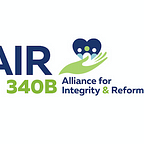New Analysis Provides Evidence of Hospitals Not Using the 340B Program as Intended
When a hospital becomes newly eligible for what is intended to be a safety-net program, you might expect to see the hospital serving more indigent or uninsured. For example, you would expect to see the amount of charity care the hospital provides increase with the additional revenue a hospital gets from the program. But with the 340B drug pricing program, new data shows that often the opposite happens.
We asked Avalere, a leading strategic advisory firm, to examine data regarding hospitals newly participating in 340B and hospitals that expanded the 340B program’s reach by adding a sizable number of new outpatient sites to the program. Avalere’s results are below.
- For new disproportionate share hospitals (DSH) participating in the 340B program for the first time in 2015, nearly 7 out of 10 (69 percent) had lower reported charity care levels in 2015 compared to both 2014 and 2013 when they weren’t enrolled in the program.
- For DSH hospitals that expanded the number of their 340B sites in 2015, 61 percent had lower charity care levels in 2015 compared to both 2014 and 2013 even though they were able to obtain additional revenue from the 340B program through prescriptions at those new 340B sites.
While the overall reduction in the uninsured population in the years analyzed is a contributing factor to the decline, it doesn’t offer a good explanation for this important finding:
- Between 2013 and 2015, 340B DSH facilities decreased charity care levels more substantially than non-340B DSH hospitals.
This new analysis, coupled with past research, provides further evidence that hospitals are pocketing revenue from the 340B program with little to no benefit for patients.
First, even though 340B is a safety-net program for clinics, such as community health centers, Ryan White clinics and hemophilia treatment centers, as well as certain hospitals, the hospitals that qualify are often providing relatively low levels of charity care to the low-income or uninsured. In fact, a previous Avalere analysis for AIR340B found that in 2014, 64 percent of 340B hospitals provided less charity care than the national average for all hospitals, including for-profit hospitals.
Second, lax program standards have allowed 340B hospitals to buy community-based physician practices, bring them under their 340B umbrella, and then obtain 340B discounts for prescriptions written by those physicians. These acquisitions can leave patients with fewer community-based provider options, pushing patients into hospital-based settings where treatment costs for certain services can be twice as high compared to the community-based provider.
This new Avalere analysis demonstrates that expanding the number of outpatient sites eligible for 340B discounts did not result in hospitals investing more into charity care for patients in 2015. What are these 340B DSH hospitals doing with the money saved from these discounts if they aren’t serving the patient population the program was created to help?
Evidence continues to suggest that 340B is benefiting certain hospitals instead of helping patients get access to the care they need. It’s time for Congress and the Administration to modernize this program to ensure patients are benefiting as intended.
